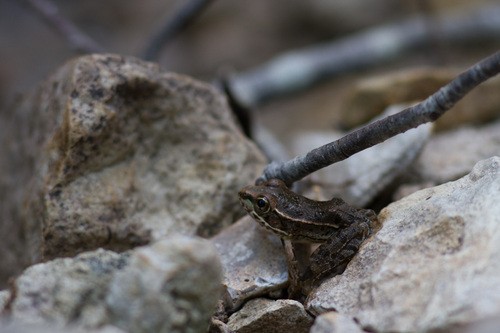Rio grande leopard frog
A species of American frogs Scientific name : Lithobates berlandieri Genus : American frogs
Rio grande leopard frog, A species of American frogs
Scientific name: Lithobates berlandieri
Genus: American frogs
Content
Description General Info
Description
The Rio Grande leopard frog (Lithobates berlandieri or Rana berlandieri) is a species of aquatic frog native to the southern United States in Texas and New Mexico, and south through Mexico and Central America. It is also sometimes referred to as the Mexican leopard frog. The epithet berlandieri is in honor of the Belgian naturalist Jean Louis Berlandier, who worked for the Mexican government on one of the first biological surveys of Texas.
General Info
Lifespan
6-10 years
Diet
Rio grande leopard frog is an opportunistic eater, mainly consuming insects and other small invertebrates. Their preference leans towards ants, beetles, and spiders, although it does not resist occasional plant matter.
Appearance
Rio grande leopard frog is a medium-sized frog with smooth skin, typically ranging from 5 to 7.5 cm in body length. They are primarily brown or olive, with distinctive dark spots across their body, giving them a speckled appearance. The species lacks notable features like horns or wings. Both males and females possess a pair of vocal sacs, a unique aspect amongst several frog species. There are no significant appearance differences due to age or gender.
Behavior
Rio grande leopard frog is moderately social, gathering in small groups. It demonstrates breeding chorus marking during mating season. Distinctly, it displays a 'rain call' behavior in response to falling barometric pressure. Predominantly nocturnal, it employs active hunting for food. Adaptations include rapid burrowing for protection against harsh weather and predators.
Population
Stable
Scientific Classification
Phylum
Chordates Class
Amphibians Order
Frogs and toads Family
True frogs Genus
American frogs Species
Rio grande leopard frog 